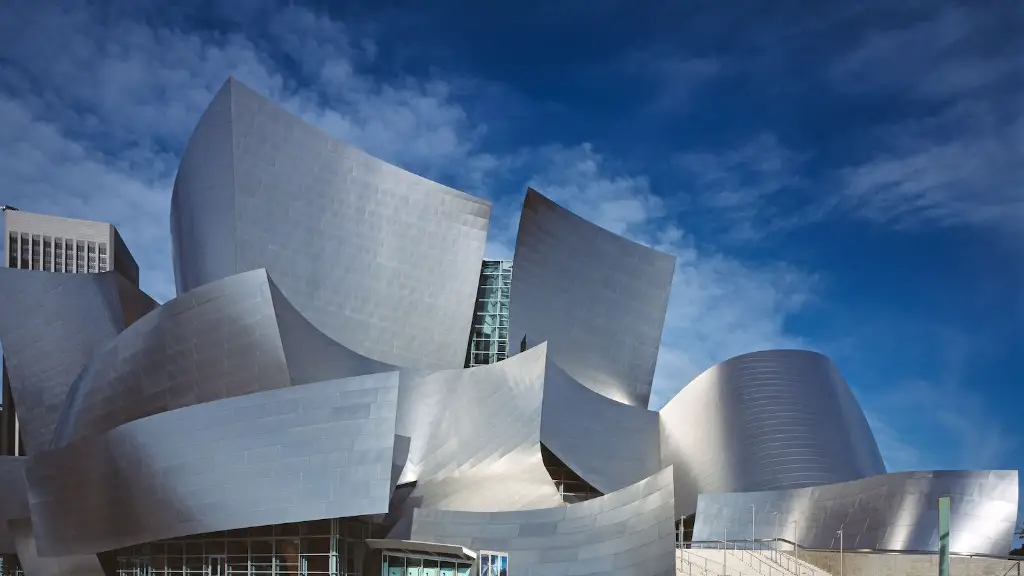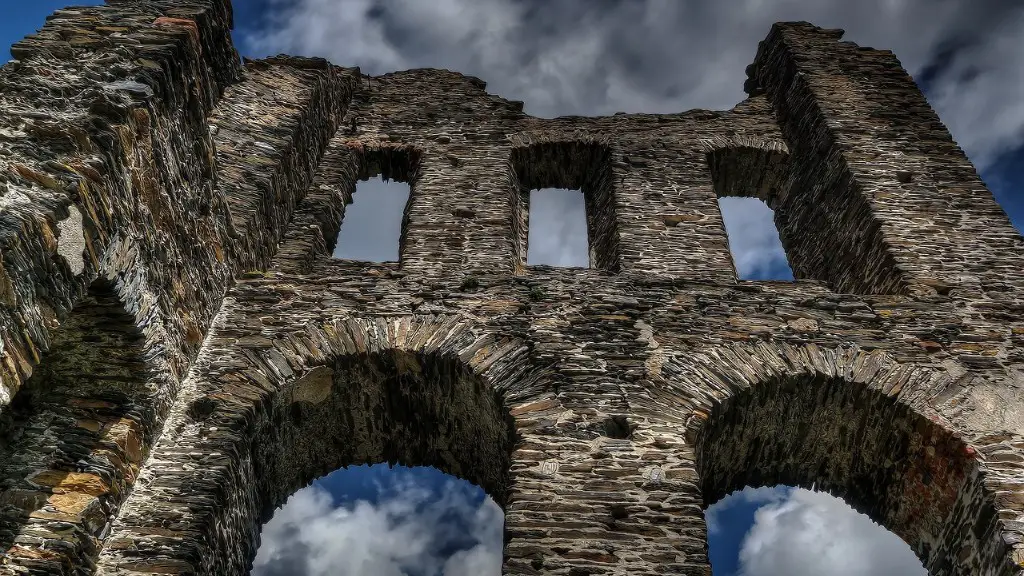Surprising History of Gothic Architecture
The history of Gothic architecture dates back to the mid-twelfth century, with the emergence of the first Gothic churches. The term “Gothic” was first used in the 16th century to refer to all of the Old World and Romanesque styles of architecture. Gothic architecture is closely associated with the European Middle Ages, particularly with Medieval France and the French Gothic style. It was during this period that large scale stone cathedrals and churches were built, taking the form of what is now known as the Gothic style.
Gothic architecture is characterized by its unique features, particularly its pointed arches, ribbed vaults and spires, flamboyant tracery, and wealth of sculptural and ornamental detail, often including carving in the form of gargoyles and grotesques. Additional features related to Gothic architecture are its soaring verticality, its use of flying buttresses, and its distinctive ribbed vaults.
Although the earliest examples of Gothic architecture can be seen in France, it spread quickly across Europe due to its popularity. From France, Gothic architecture spread to England, Germany, the Netherlands, Italy, and Spain. Gothic architecture was used extensively in the construction of churches and cathedrals, but it was also employed in the construction of some secular buildings, such as royal palaces.
The development of Gothic architecture was the result of advances in both engineering and design. Medieval masons and carpenters experimented with a number of new structures and designs, such as pointed arches and ribbed vaults, in order to create larger and more impressive churches. But at its core, Gothic architecture was a reflection of the medieval worldview: an emphasis on the glory of God and the heavenly virtues.
Gothic architecture is an integral part of European culture, having shaped the visual landscape of many cities. Numerous examples of Gothic architecture can be found throughout Europe, from the iconic Notre Dame Cathedral in Paris, to the mighty King’s College Chapel in Cambridge, to the graceful St. Vitus Cathedral in Prague. Gothic architecture is also recognized for its contribution to modern architecture, with the revival of the Gothic style in the 19th and 20th centuries.
Symbolism of Gothic Architecture
Gothic architecture conveys much more than a sense of awe and grandeur. It’s a visual reminder of the medieval Christian faith and its values. Many of the features associated with Gothic architecture, such as flying buttresses, can be seen as symbols of the human desire to reach out to the heavens and connect with God. Likewise, the use of pointed arches and ribbed vaults were a reflection of the belief that heaven and earth were interconnected.
Moreover, there is something profoundly spiritual about the soaring verticality of Gothic architecture, which was intended to create a sense of the transcendent. Gothic churches and cathedrals were designed to be the physical embodiment of the Gothic worship experience, allowing worshippers to feel a sense of awe and majesty, while also feeling a connection to the divine.
Importance of Gothic Architecture Today
Gothic architecture is still an essential part of European culture today, and its legacy can be seen around the world. It is an enduring reminder of the power and beauty of faith, and of the beauty of art, and its relevance can be found in even modern architecture.
Gothic architecture is also immensely important to the preservation of historical sites and monuments. Countless examples of Gothic architecture around the world are protected as UNESCO World Heritage sites and serve as touchstones to the past. Indeed, some examples are considered to be among the most important monuments in European history, and are integral to our understanding of the Middle Ages.
Interplay of Gothic Architecture with Technology
The development of Gothic architecture represented a significant advance in engineering and design, as medieval masons and carpenters experimented with new structures and designs to create larger and more impressive churches. Many of these structures and designs were made possible by advances in technology, such as geometrical calculations, improved stonecutting methods, and advances in metallurgy. By mastering the interplay of elements such as pointed arches and ribbed vaults, masons and carpenters were able to construct massive cathedrals and churches that were both stunning and structurally sound.
The Gothic style has continued to influence modern architecture and engineering. Architects of the 19th and 20th centuries often drew on the forms of Gothic buildings to create a narrative of modernity. Furthermore, computer-aided drawing programs have made it easier and more accurate for architects to create projects inspired by Gothic architecture.
Gothic Architecture and Civic Life
Gothic buildings have also had a major impact on civic life. The vast majority of Gothic buildings were churches and cathedrals, which served as focal points for cities and towns. They served not only as places of worship, but also as centers of culture, education, and civic life. The immense scale of many grand cathedrals was designed to inspire awe and mysticism. Meanwhile, many smaller gothic churches were designed to reinforce the hierarchical structures of medieval religious life.
In addition to being important religious sites, Gothic architecture has also been used to create civic monuments, such as public squares and parks. Throughout Europe, cities have also used Gothic architecture to create a sense of grandeur and civic pride, often displaying the same intricate details found in Gothic cathedrals.
Impact of Gothic Architecture on Art and Music
Gothic architecture has had a major influence on the development of European art and music. The intricate stone designs found in Gothic buildings, such as lancet windows and flying buttresses, often served as inspiration for paintings and sculptures of the period. Many of these artworks displayed Christian themes which were deeply associated with Gothic architecture.
Gothic cathedrals also had a major influence on the development of musical styles, most notably in the development of polyphonic music. In addition, much of the music and liturgy written for the cathedrals was designed to reflect the glory and grandeur of the cathedrals themselves.
Gothic Architecture and Conservation
Gothic architecture is also important for its role in conservation. Several countries, including the United Kingdom, France, Germany, and Italy, have created conservation programs specifically devoted to the preservation of Gothic buildings. These efforts have proved to be an invaluable resource for understanding the culture and history of the Middle Ages.
From a heritage perspective, Gothic architecture is an important part of our shared history. Numerous monuments in Europe and beyond display the influence of Gothic architecture, and they serve as a reminder of the power of art and architecture to inspire awe and evoke a sense of the divine.
Gothic Architecture and Popular Culture
The influence of Gothic architecture can still be seen in popular culture today. For example, the iconic Notre Dame Cathedral in Paris is often featured in movies and television shows, and its beauty and grandeur have served as an inspiration to countless authors and artists. In addition, Gothic architecture often serves as the backdrop for supernatural events, a testament to its ability to evoke a sense of mystery and awe.
Moreover, the Gothic style has continued to influence modern architecture and engineering, with elements of the style being borrowed by modern architects and engineers. Gothic revival buildings often incorporate Gothic elements, such as pointed arches and ribbed vaults, making them both aesthetically pleasing and structurally sound.
Conclusion
Gothic architecture is an enduring legacy of the Medieval period, and its influence can be seen throughout the world. Gothic architecture is both awe-inspiring and spiritually moving, and its influence can be seen in both modern architecture and popular culture. The preservation of these buildings is an invaluable resource for understanding the culture and history of the Middle Ages.





